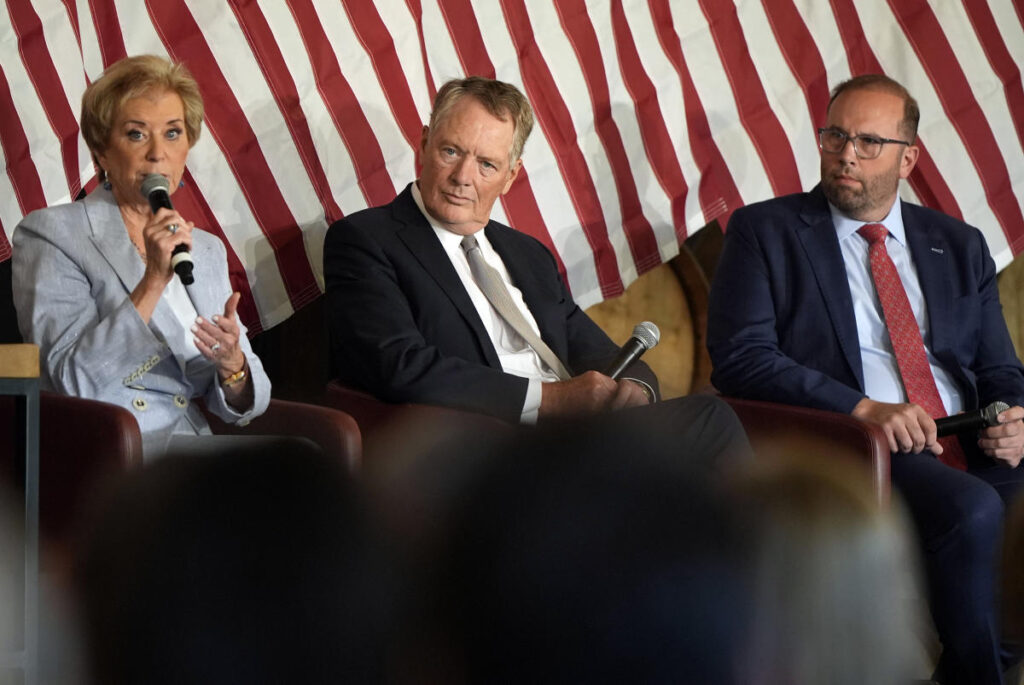Donald Trump is reassembling a familiar team from his first administration, drawing on the expertise and loyalty of former officials to craft a strategic set of policies for a potential new term as president. This transition is anticipated to be more adept and organized compared to Trump’s previous transition in 2016, which faced significant challenges and delays due to infighting among top officials. Insiders suggest that this time, Trump’s team is more cohesive and aligned with his direct expectations, reducing the likelihood of a chaotic transition. Mauricio J. Claver-Carone, a former Trump transition official, illustrated that the next cabinet members would understand their role is to serve the president, reflecting a clear command structure aimed at efficiently implementing Trump’s agenda from day one.
The leadership of the transition is primarily in the hands of Linda McMahon, Trump’s former Small Business Administration chief, and Howard Lutnick, a billionaire financier responsible for vetting candidates. While Lutnick has attracted criticism due to his lack of prior experience in the Trump administration, the policy side of the transition has been purposefully low-profile, following the backlash against the Heritage Foundation’s Project 2025, which laid out ambitious plans for a second Trump term. Conversations among insiders reveal that numerous former officials are being consulted, including key figures like Robert Lighthizer, who is focusing on trade policies, and Kevin Warsh, who is advising on economic strategies.
As the transition progresses, those involved are deliberately keeping operations confidential to avoid scrutiny that could derail their plans. Former officials recognize the need to learn from the tumultuous events of the 2016 transition, emphasizing discretion and focus to mitigate distractions related to personnel changes or disagreements. Trump himself is known for being cautious about planning ahead of time, preferring concrete situations rather than making presumptions. Consequently, advisors are taking care not to provoke any anxiety among their allies and are maintaining a low profile during the preparatory phase.
Economic policy is a top priority within the transition, specifically concerning tariffs, which are considered crucial for Trump’s second administration. With Robert Lighthizer at the helm of economic planning, discussions have already taken place directly between Lighthizer and Trump about ambitious trade proposals for the first 100 days in office. This will likely include executive actions concerning tariffs, with key advisors working on creating detailed “action plans.” As part of this effort, a network of Trump loyalists and advisors, including members from the America First Policy Institute (AFPI), is actively shaping strategies to ensure continuity and effectiveness in implementing Trump’s policies.
Personnel selection is a critical aspect of the transition process, and Lutnick is leading a highly compartmentalized vetting operation. There is a focused effort to identify candidates for both immediate and long-term positions within the new administration, including agency-specific landing teams that will help streamline the transition. However, the refusal to sign agreements with the Biden administration for the sharing of federal resources may create complications, limiting access to critical information needed for an effective transition. Despite these challenges, some within Trump’s team are exploring alternative methods to navigate federal protocols and maintain their independence from traditional oversight.
In contrast to norms established in previous transitions, Trump’s team is taking an unconventional approach regarding federal employee vetting. Advisors have proposed sidestepping traditional background checks typically required for security clearances by allowing Trump to grant them after taking office. As the transition unfolds, it is evident that efforts are being made not only to craft a strategic policy framework but also to secure personnel in a manner aligned with Trump’s distrust of existing bureaucratic structures. The urgency to finalize plans is amplified by the impending election, with Trump having to balance the need for comprehensive policy strategies against the need for operational secrecy and security amid increasing scrutiny.

